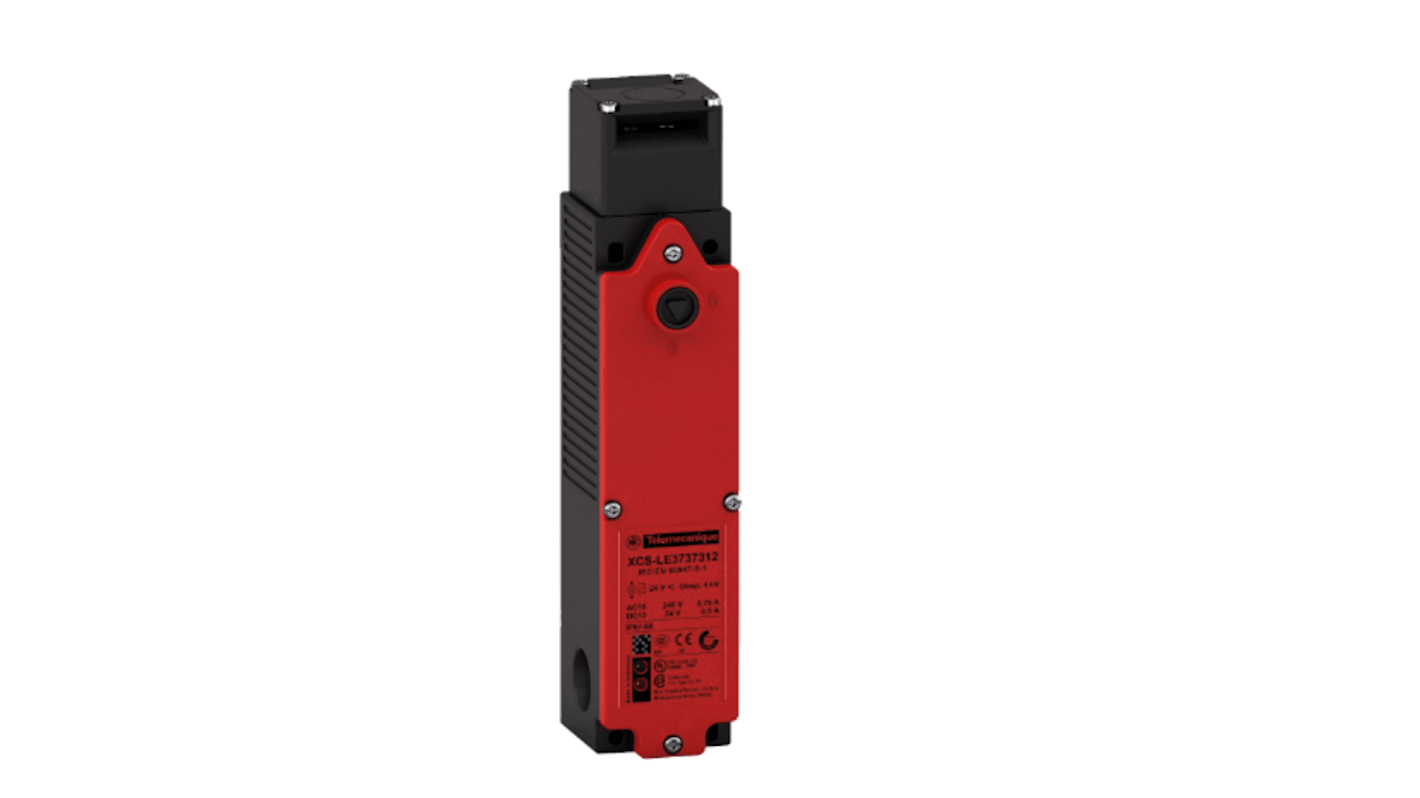Telemecanique Sensors XCS Safety Interlock Switch, 2NO+2NC, Keyed, Plastic
- RS Stock No.:
- 220-1365
- Mfr. Part No.:
- XCSLE2525332
- Brand:
- Telemecanique Sensors

Subtotal (1 unit)*
£153.52
(exc. VAT)
£184.22
(inc. VAT)
FREE delivery for orders over £50.00
Temporarily out of stock
- Shipping from 24 October 2025
Need more? Click ‘Check delivery dates’ to find extra stock and lead times.
Units | Per unit |
|---|---|
| 1 + | £153.52 |
*price indicative
- RS Stock No.:
- 220-1365
- Mfr. Part No.:
- XCSLE2525332
- Brand:
- Telemecanique Sensors
Specifications
Technical Reference
Legislation and Compliance
Product Details
Find similar products by selecting one or more attributes.
Select all | Attribute | Value |
|---|---|---|
| Brand | Telemecanique Sensors | |
| Lock Style | Keyed | |
| Normal State Configuration | 2NO+2NC | |
| Lock Type | Interlock | |
| Maximum AC Voltage | 120V | |
| Connection Type | M20 | |
| Housing Material | Plastic | |
| Series | XCS | |
Select all | ||
|---|---|---|
Brand Telemecanique Sensors | ||
Lock Style Keyed | ||
Normal State Configuration 2NO+2NC | ||
Lock Type Interlock | ||
Maximum AC Voltage 120V | ||
Connection Type M20 | ||
Housing Material Plastic | ||
Series XCS | ||
- COO (Country of Origin):
- ID
The Schneider Electric This product is part of the XCS range, an offer of safety switches. The limit switch is a device that converts a mechanical motion into an electrical control signal. It has 3 normally closed, slow break contacts, normally closed contact with positive opening operation. It is a switch with a rated operational current of 1.5A at 240V AC, 3A at 120V AC, 0.27A at 250V DC, 0.55 at 125V DC and a conventional enclosed thermal current of 6A.
It offers long mechanical durability which is about 1 million operating cycles
It is designed to operate in hazardous environments
It is an IP67 rated product
It offers protection of operators by stopping the machine when the actuator attached to the
It is designed to operate in hazardous environments
It is an IP67 rated product
It offers protection of operators by stopping the machine when the actuator attached to the
